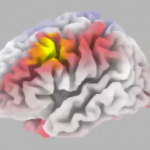What Does Self Control Think-and-Feel Like?
Self control is a prized resource. Most of my clients and many students are interested in what it is and how to get more of it. To design programs, products and services that improve self control we must first understand what it feels like. More specifically, what are the unique mental states, frame of mind or thoughts and feelings associated with a state of self control. Until we have insight into that, it will be tough to apply cognitive design to the challenge.
So what does self control think and feel like? We can study the question with introspection, self reports, ethnographic observation and protocol analysis. And hope for an articulation (narrative description) that is accurate and specific enough to provide design insights. We can also study the question with neuroscience and brain scans. While lacking an articulation of the psychological contents, a neuroscientific study can never the less lead to interesting interventions.
 As an example of the neuroscience approach, I recently found a TEDx talk, A Brain Computer Interface for Exercising the Self Control Muscle, by Jordan Silberman a PhD/MD student at the University of Rochester. We might not always know what self control thinks or feels like but we do know what it looks like in the brain (image to the right). Knowing that it is possible to develop an neurofeedback training scheme (see below) that correlates the brain state of self control to an external training signal (a bar that moves up and down on the computer screen.
As an example of the neuroscience approach, I recently found a TEDx talk, A Brain Computer Interface for Exercising the Self Control Muscle, by Jordan Silberman a PhD/MD student at the University of Rochester. We might not always know what self control thinks or feels like but we do know what it looks like in the brain (image to the right). Knowing that it is possible to develop an neurofeedback training scheme (see below) that correlates the brain state of self control to an external training signal (a bar that moves up and down on the computer screen.
This simple device lets the user learn to put themselves in the mental state of self control through rapid trial and error. By inducing the state you exercise your self control muscle. The video shows one experiment where people that used the training are able to maintain self control far better than the control group.
This is an exciting result with a lot of implications for cognitive designers once the technology matures a bit. In the meantime you have to wonder, do people that go through this training have a better insight into the think-and-feel of self control? Can it be articulated and used to drive design innovations now?
Interested to hear from readers – how do you characterize the frame of mind (intellectual, affective, motivational, volitional) for self control?
